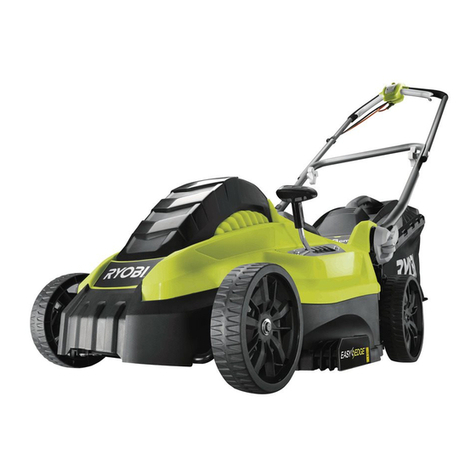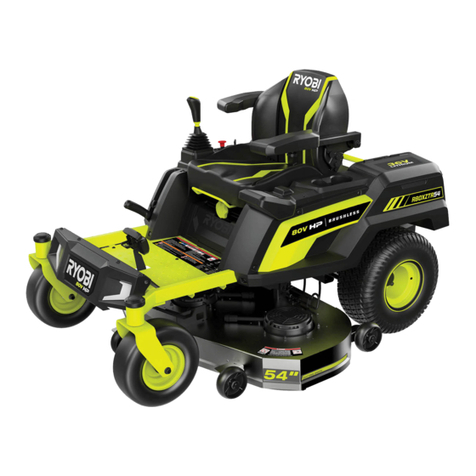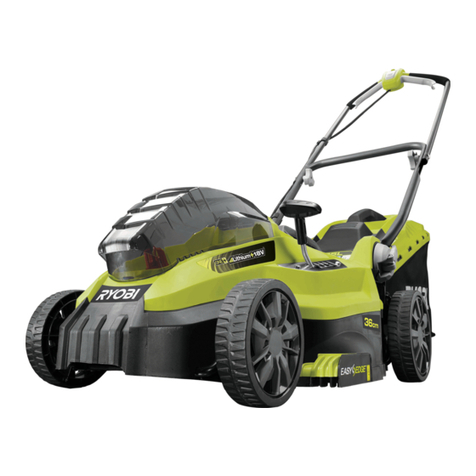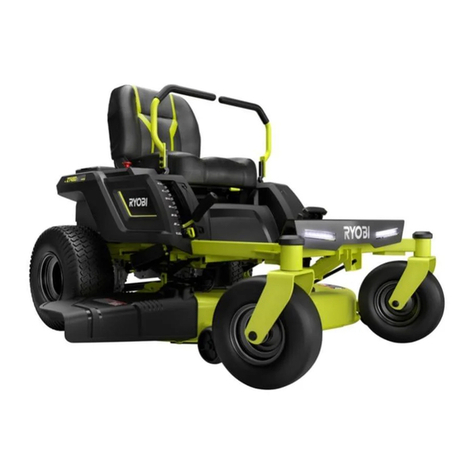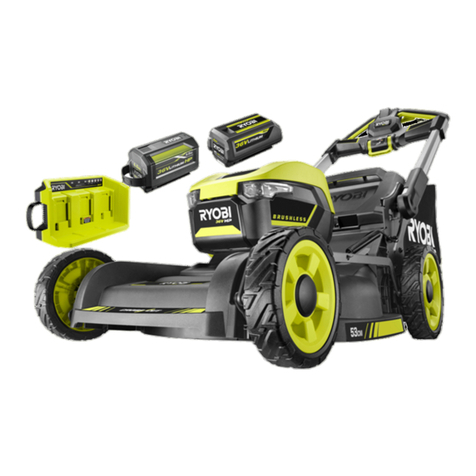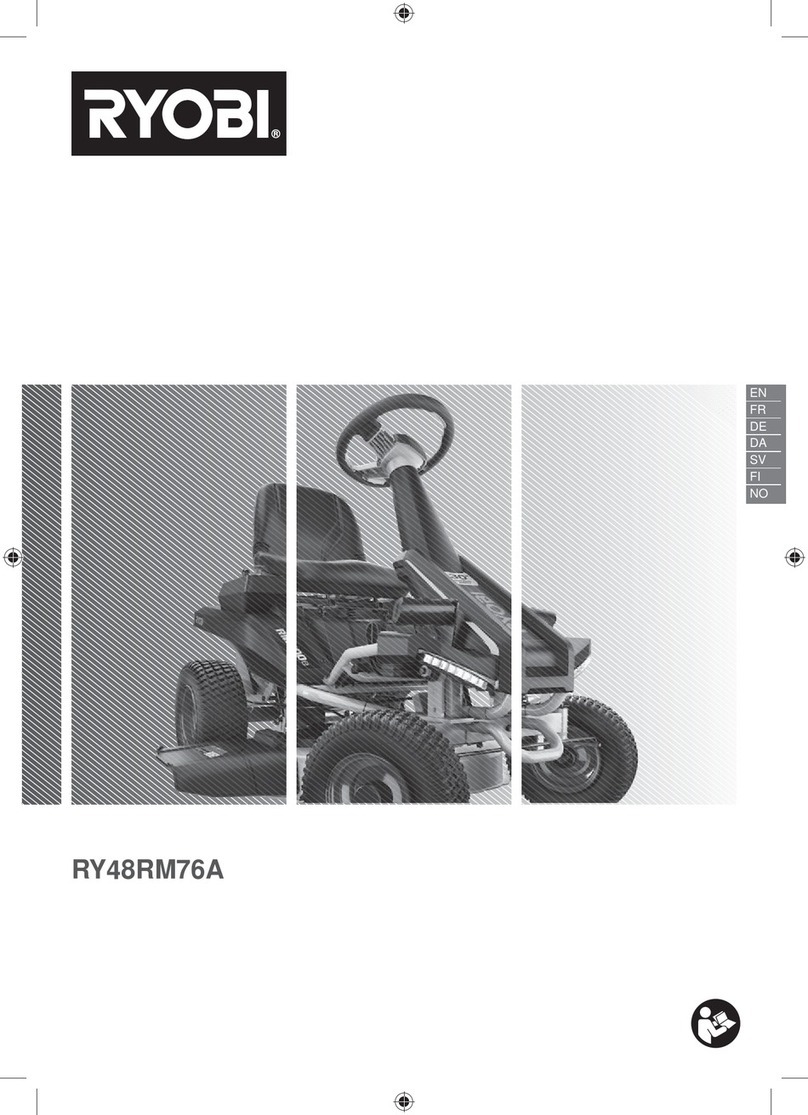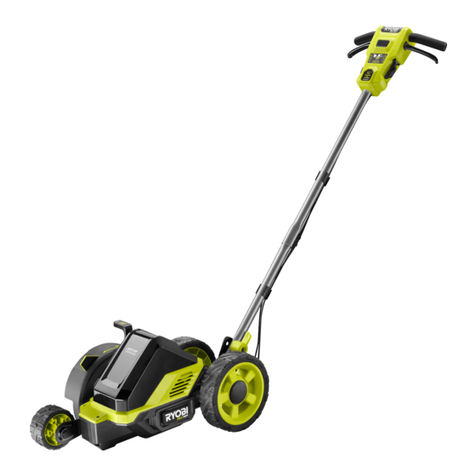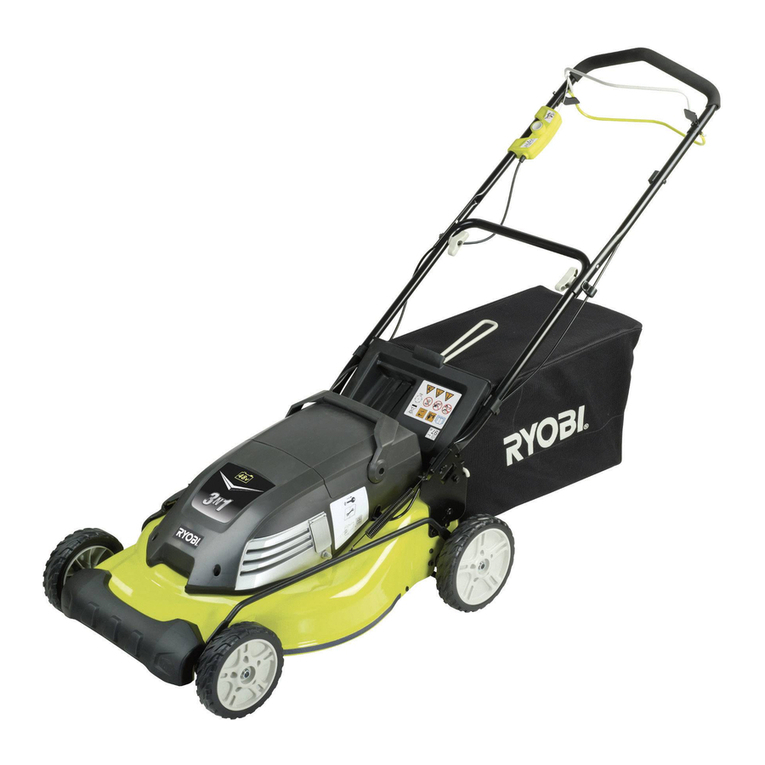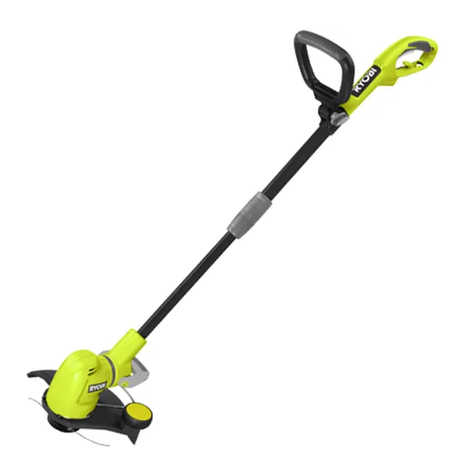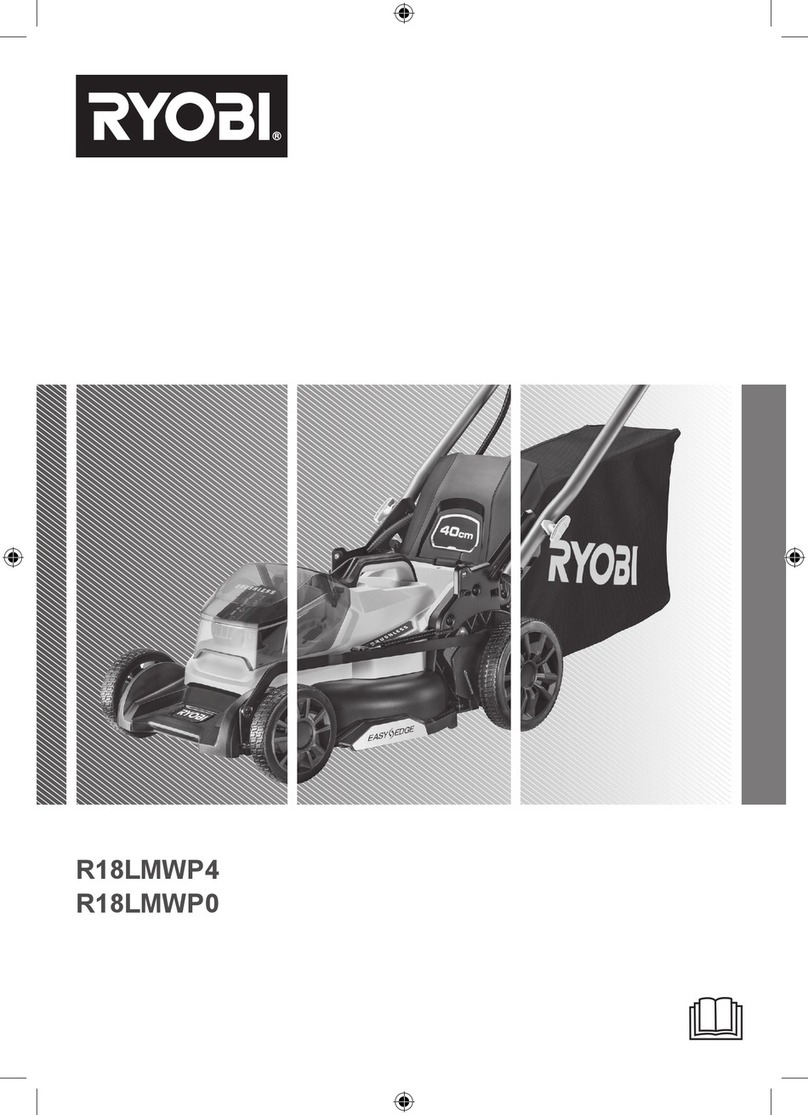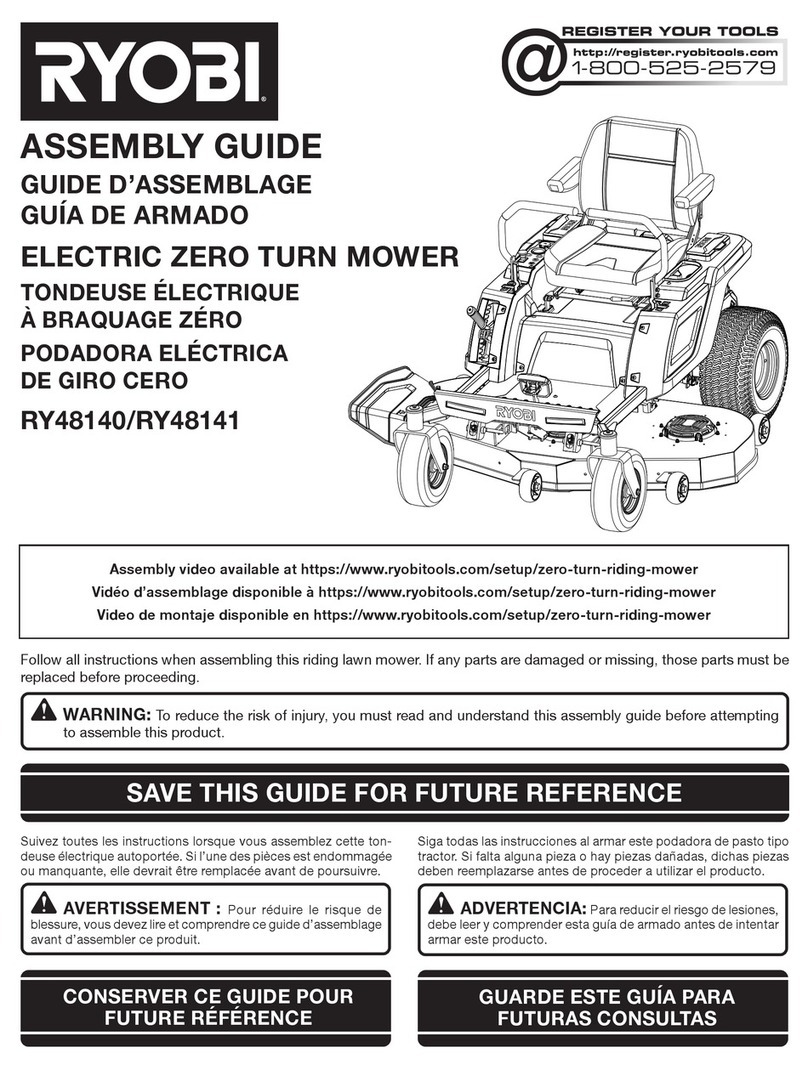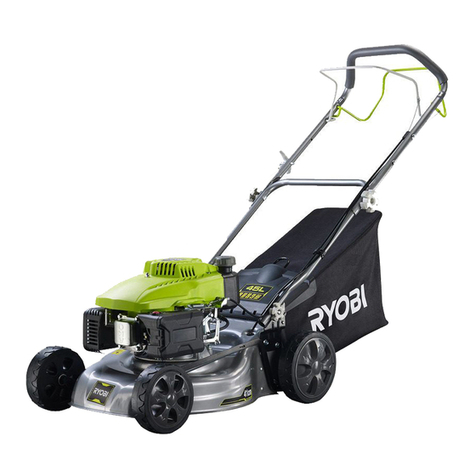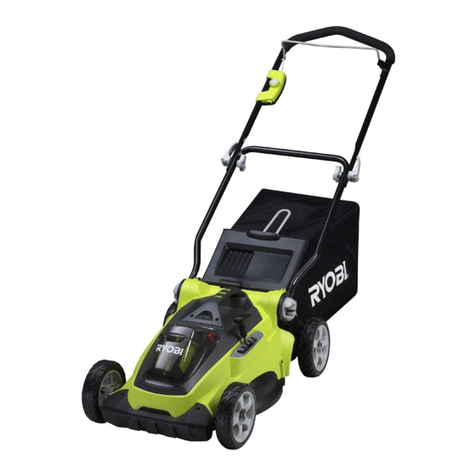
English
1
EN
FR
DE
ES
IT
NL
PT
DA
SV
FI
NO
RU
PL
CS
HU
RO
LV
LT
ET
HR
SL
SK
BG
UK
TR
Safety, performance, and dependability have been given
top priority in the design of your petrol lawn mower.
INTENDED USE
The petrol lawn mower is only intended for use outdoors.
The product is designed for domestic lawn mowing. The
cutting blade should rotate approximately parallel to the
ground over which it is being wheeled. All four wheels
should touch the ground while mowing.
The product is a pedestrian-controlled, walk-behind mower
designed to be pushed by hand, or be guided by the
operator when using the self-propel feature.
The product should never be operated with the wheels off
the ground. It should not be pulled or ridden on. It should
not be used to cut anything other than domestic grass
lawns.
Do not use the product for any other purpose.
GENERAL SAFETY WARNINGS
WARNING
When using the product, the safety rules must be
followed. For your own safety and that of bystanders,
please read these instructions before operating the
product. Please keep the instructions safe for later use.
WARNING
To avoid serious personal injury, do not attempt
to use the product until you read thoroughly and
understand completely the operator’s manual. If you
do not understand the warnings and instructions in
the operator’s manual, do not use this product. Call an
authorised service centre for assistance.
PERSONAL SAFETY
■The product is capable of amputating hands and feet,
and of throwing objects. Failure to observe all safety
instructions could result in serious injury or death.
■Be familiar with the controls and the correct use of the
product.
■Ensure before each use that all controls and safety
devices function correctly. Do not use the product if the
off switch does not stop the engine.
■Never allow children or people with reduced physical,
sensory, or mental capabilities or persons not familiar
with these instructions to operate, clean, or maintain the
product. Local regulations may restrict the age of the
operator. Children should be adequately supervised to
ensure they do not play with the product.
■Stay alert, watch what you are doing, and use common
sense when operating the product. Do not operate the
product when you are tired, ill, or under the influence of
drugs, alcohol, or medication. A moment of inattention
while operating the product may result in serious
personal injury.
■Wear heavy, long trousers, long sleeves, and sturdy
anti-slip footwear. Do not wear short trousers, sandals,
or go barefoot. Avoid wearing clothing that is loose
fitting or that has hanging cords or ties.
■Always wear safety glasses with side shields.
■Wear hearing protection and safety glasses at all
times while operating the product. Use a face mask if
operation is dusty.
■Use of hearing protection reduces the ability to hear
warnings (shouts or alarms). The operator must pay
extra attention to what is going on in the work area.
■Operating similar tools nearby increases both the risk
of hearing injury and the potential for other persons to
enter your work area.
■Always be sure of your footing, especially on slopes.
Keep firm footing and balance. Do not overreach.
Overreaching can result in loss of balance.
■Use the product across the face of slopes, never up
and down. Exercise extreme caution when changing
direction on slopes.
■Do not use the product near drop-offs, ditches,
excessively steep slopes, or embankments. Poor
footing could cause a slip-and-fall accident.
■Plan your mowing pattern to avoid discharge of material
towards roads, public pavements, bystanders and
the like. Avoid discharging material against a wall or
obstruction, which may cause the material to ricochet
towards the operator.
WORK AREA SAFETY
■Never use product while people, especially children, or
pets are within 15 m because of the danger of objects
being thrown by contact with the blade.
■Objects struck by the lawn mower blade can cause
severe injuries to persons. Thoroughly inspect the area
where the product is to be used and remove all rocks,
sticks, metal, wire, bones, toys, or other foreign objects.
Remember, string or wire may entangle with the cutting
means.
■Always use the product in the daylight or in good
artificial light. The operator requires a clear view of the
work area to identify potential hazards.
■Do not operate the product in explosive atmospheres,
such as in the presence of flammable liquids, gases or
dust. The product creates sparks which may ignite the
dust or fumes.
■Do not operate the product on wet grass or in the rain.
■Do not use the product when there is a risk of lightning.
■Keep in mind that the operator or user is responsible
for accidents or hazards occurring to other people or
their property.
■Tragic accidents can occur if the operator is not alert to
the presence of children. Children are often attracted to
